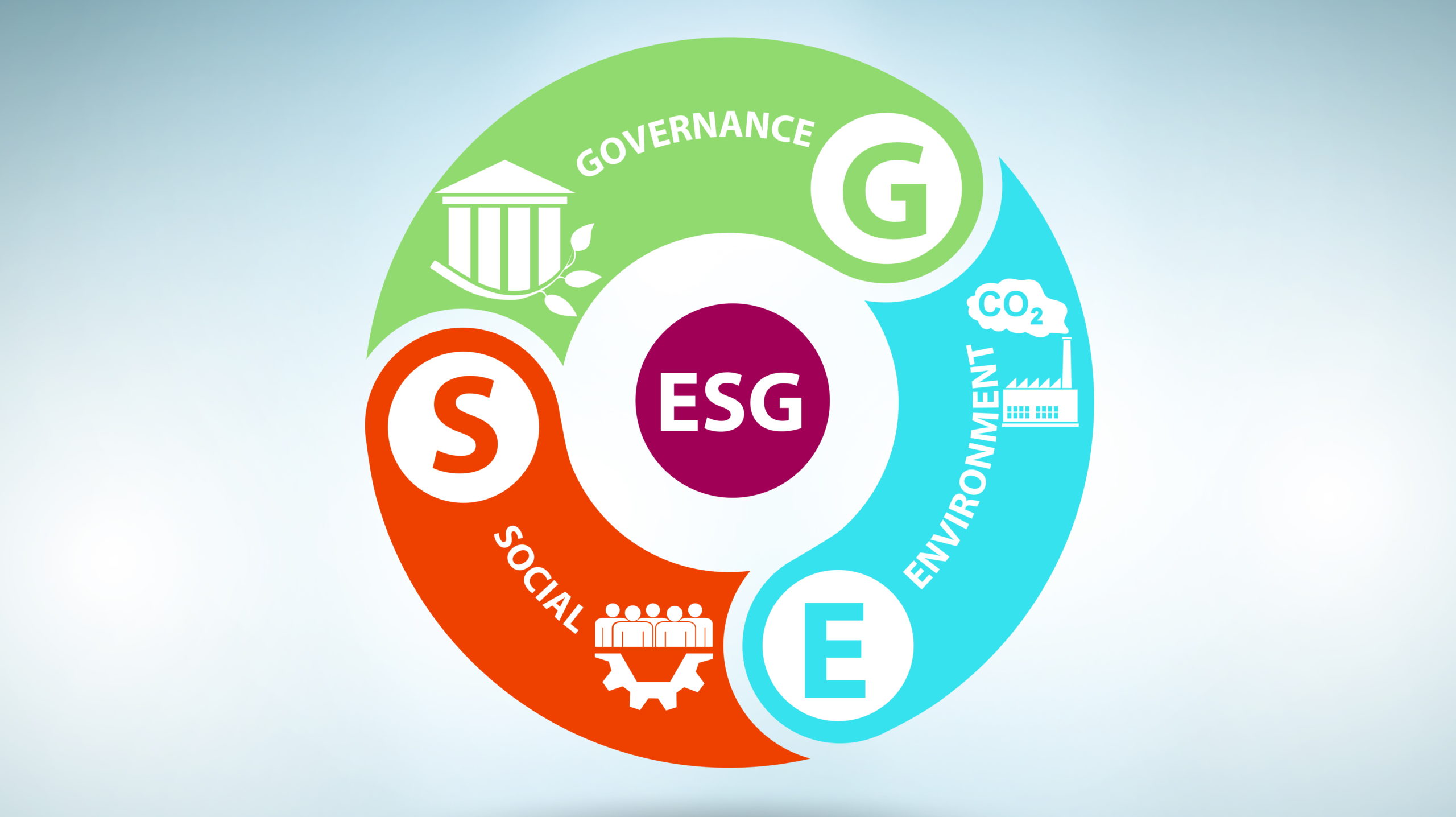What is ESG?
Environmental, social, and governance (ESG) criteria are a measurable set of standards for how an organization operates. Environmental criteria consider how an organization performs as a steward of nature (e.g., energy usage, waste, pollution, natural resource conservation). Social criteria consider how an organization manages relationships with employees, suppliers, customers, and the community where it operates. Governance criteria consider an organization’s leadership, executive pay, audits, internal controls, and shareholder rights.1 While the concepts of ESG may often be thought of from a compliance or risk management perspective, they can also be a driver of new opportunities and innovations that create long-term value for both business and society.
The Importance of ESG to the Digital Enterprise
According to recent research, ESG questions are top of mind2 (76%) for young professionals. This is a generation that seeks long-term employment with companies that have the right values and a sustainable brand. It is a remarkable change from earlier generations and is something that companies need to address for gaining access to right competencies and talent. It is a fact that young professionals also have a different experience of digital having grown up with the internet from childhood. For them, digital natives, it is natural to live their lives on the internet and see the business possibilities in a different way. The ability to understand, serve and harness the potential of these new generations – as customers and as employees – is essential for digital competitiveness in the future. How will organizations survive without an ESG strategy and thereby attracting edge-competence of the digital era?
In addition, from a competitiveness perspective, the fact is that a strong ESG profile will give organizations a competitive edge in the digital marketplace. 73% of all consumers will recommend a brand with high ESG focus.3 In our business world of continuous and rapid change, ESG focus is gaining more and more importance when brand attraction is rated. We see that companies breaching ESG principles (for example anti-corruption or working environment) lose competitiveness as their brand’s credibility declines. Only 5% of companies and organizations live up to the customer’s ESG expectations. For example, large sports events (such as Olympic Games and Football World Cup) have been struggling with ESG principles, thereby eroding the purpose, values and profitability of these large hosting organizations. Who wants to be associated with an organization unable to comply with basic principles of fair business?
Today, more and more companies are struggling to fulfill the customer’s ESG expectations, which leads to a credibility problem. The result is reduction in power of their brand, market shares, ability to recruit digital edge-competence – and in the end business competitiveness. But the question is where to start? For many years, ESG questions were concentrated on in marketing and communication departments, focused on building a strong ESG brand. However, what we see today is that ESG needs to play a pivotal role in all the corporate ways of working, ecosystem and capabilities. The responsibility for ESG is no longer limited to one department but rather needs to influence everything and everybody in the organization.
In 2010, the United Nations formed a non-binding pact to encourage businesses and firms worldwide to adopt sustainable and social responsibility. The pact (United Nations Global Compact) stated ten principles in the areas of human rights, labor, the environment and anti-corruptions. Today, 13,000 companies and other stakeholders in over 170 countries have joined the initiative and reported their progress. The UN Global Compact is a set of principles and guidelines that describe a sustainable organization – and that companies with ESG ambitions need to comply with.
The UN Global Compact principles provide clear direction and guardrails on how to do business. For this reason, they are invaluable to guide an organization’s ESG objectives, transformation, and performance measurement. However, they may also be coupled with the UN Sustainable Development Goals (SDGs) for a more aspirational view on an organization’s potential impact. There are 17 SDGs4 that set a bold global agenda for helping the world to move beyond traditional indicators such as GDP growth and per capita income to a broader set of objectives that include well-being, environmental sustainability, and social fairness. As an organization considers how to move forward with their ESG agenda and set their targets, the UN Global Compact principles guide on what must be done, but the UN SDGs inspire on what can be done to help make a difference – which will ultimately produce returns with potential new markets, customers, products, innovations as well as goodwill to operate.
The challenge for many enterprises and organizations is to find the right place to start. How can a complex organization involving thousands of employees, division/units and ecosystem partners be ESG-certified? Can it even be done? In the end, it is about creating a new corporate vision and ambition of change supporting ESG principles. The situation needs to be assessed and a roadmap developed defining key areas and capabilities (business architecture) that need to change for UN Global Compact compliance and even SDG contribution. The change journey needs to be coordinated and tracked to ensure that progress is made in the right direction. It is a question of leadership and mindset over everything else and needs to be prioritized among executive leaders and senior managers. Companies and organizations failing to comply with the UN Global Compact Principles will struggle to survive and risk being phased out.
There is today a need for many companies to initiate their sustainable transformation to remain relevant for customers and edge-competence in the future. However, research shows that 70% of business transformations fail to deliver the desired results. The main cause of failure is lack of adequate leadership, culture and change capabilities. It is of essence then, to align an organization’s leadership, culture and change capabilities to the new ESG vision and ambition – to limit the risk of failure as well as achieve new competitiveness and success.
Moving Into Action on ESG
Getting started can seem overwhelming, but it starts with understanding where you are today and committing to a journey of ongoing improvement. We recommend the following steps:
- Build an enterprise-wide awareness of the importance of the ESG principles – especially among executives and senior managers. What are the business consequences of not complying to the UN Global Compact Principles? How will it affect the corporate brand and customer perceptions? What are the opportunities of complying and even leading the way?
- Establish a common vision, ambition and analysis of the situation. Where do we today have compliance issues with the UN Global Compact Principles? What level of ESG performance do we aspire to? Where do we need to start?
- Establish clear objectives for ESG impact. Align them with the UN Global Compact Principles as well as the UN Sustainable Development Goals (SDGs). Take accountability for continual improvement and commit to measuring and reporting your results to internal and external stakeholders.
- Target specific areas of the business for ESG transformation or improvement. Which business capabilities should be key focal points for improvement? Which products, people, process, information, technology, assets and locations are involved? How can different areas of the business – and its partners – work together for maximum impact?
- View your ESG efforts as an organizational change initiative and assess if your organization has the right change capabilities and conditions. Is it likely that our change initiative will be successful? Have we considered how to orchestrate change so that it can be consumed by our various stakeholders?
- Engage experts in the field of ESG to advise, drive and quality assure the initiative. The lack of the right expertise will most likely direct the initiative in the wrong direction and potentially lead to a breach of the UN Global Compact Principles – and an inability to achieve the full potential for success.
The role of ESG initiatives have changed during the last 10 years from a nice to have to essential to survive. Companies that fail to comply with global ESG principles will fail to build trust and credibility with customers and other stakeholders, creating a very real risk of being phased out of business. On the other hand, companies that seize the situation as an opportunity to lead the way in ESG will win the hearts and minds of stakeholders and create opportunities for new markets, products, and innovations.
As with all business transformations, it is all about creating the right leadership, culture and approach to change engaging the whole organization. The question is: are you ready for this journey and what it takes to succeed? While the journey will be challenging and perhaps costly and painful at times – is there an alternative? But also, what is the potential upside that lies ahead? All great transformations start with a single step. Are you ready for the leap into the future?
Sources:
- Based on Environmental, Social, and Governance (ESG) Criteria By James Chen
- Miljöjobb is Sweden’s leading specialist job site in environment and energy.
- Corporate Reputation Management
- UN Sustainable Development Goals
About the Co-Authors:

Hans Gillior
Institute Fellow
Hans Gillior is a founding partner of The Goodwind Company, an advisory and knowledge company in field of digital transformation. The Goodwind Company believe in the sharing economy and the power of networks across borders and cultures. The company provides a “best practice” framework (service library) supporting Digital Transformation GooDIGITAL based on the collective knowledge and experience of Goodwind partners, academia and business partners.
Hans Gillior is an experienced Principal in field of IT/Digital Transformation with both senior line manager and senior advisor positions. He has a proven track record of changing the mind-set of leadership, and implementing dynamic governance and capabilities to create a competitive advantage in unpredictable digital markets. He is a digital thought-leader part of local and global expert networks, but also a frequent speaker at conferences, management coach/trainer and author.
 Whynde Kuehn
Whynde Kuehn
Institute Fellow
Whynde Kuehn is the Founder and Managing Director of S2E Transformation, helping organizations bridge the gap between strategy and execution, and achieve their greatest visions for business transformation in a practical and business-focused way. Whynde has extensive experience in enterprise transformation and planning and was a key player in architecting one of the largest digital business transformations in the world. She also led one of the largest business transformation and architecture consulting practices prior to starting S2E.
Whynde is a passionate advocate for using business architecture to enable effective strategy execution and digital transformation. She is a long-time business architecture practitioner, educator, author, recognized industry thought leader, and community builder, with extensive experience applying the discipline at leading Fortune 500 enterprises and a range of entrepreneurs, nonprofits and social initiatives. She is the Founder of Biz Arch Mastery, a dedicated online platform offering coaching and resources to simplify business architecture and facilitate its practical usage. She is also a Partner at Business Architecture Associates, Senior Consultant for Cutter Consortium, and a Co-Founder of the Business Architecture Guild.
Tag/s:Business TransformationDigital Enterprise






Excellent article, and a topic which will only grow in importance. The balance between 4IR and ESG cannot be over emphasised. With the global pandemic becoming the catalyst for a complete rethink of business activity there is no better time than now to address this issue. Many organization’s have retrenched staff in an attempt to survive the devastating consequences of the pandemic, and this increasing the numbers of people living in wretched poverty.
Thank you for your post, and your call to arms for ESG adoption within companies.